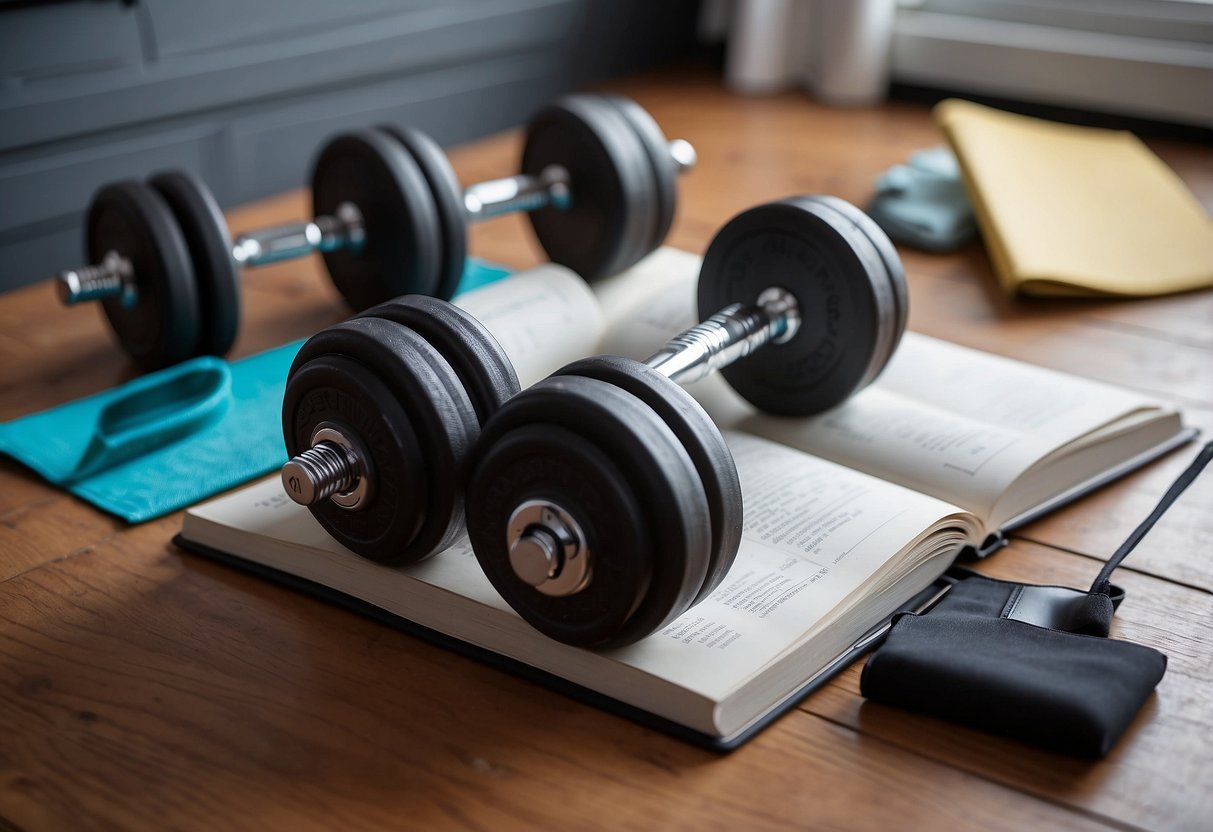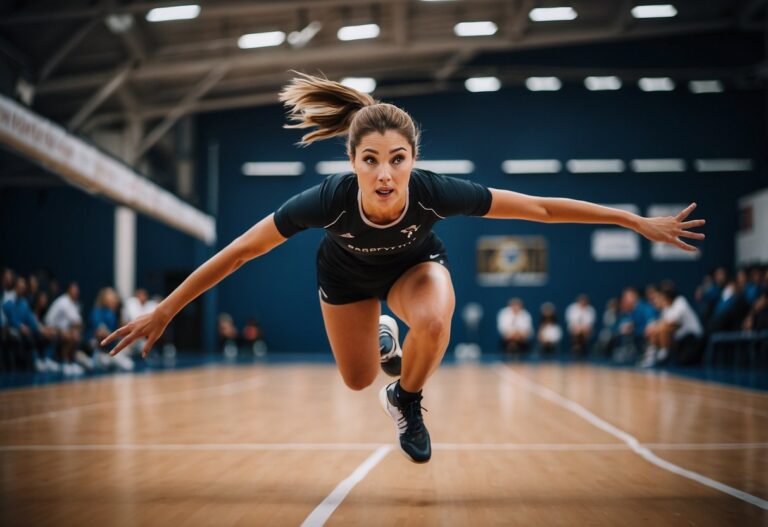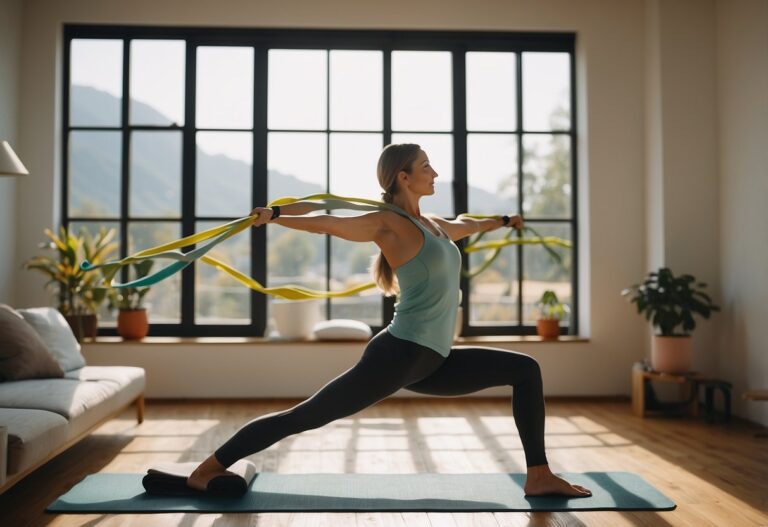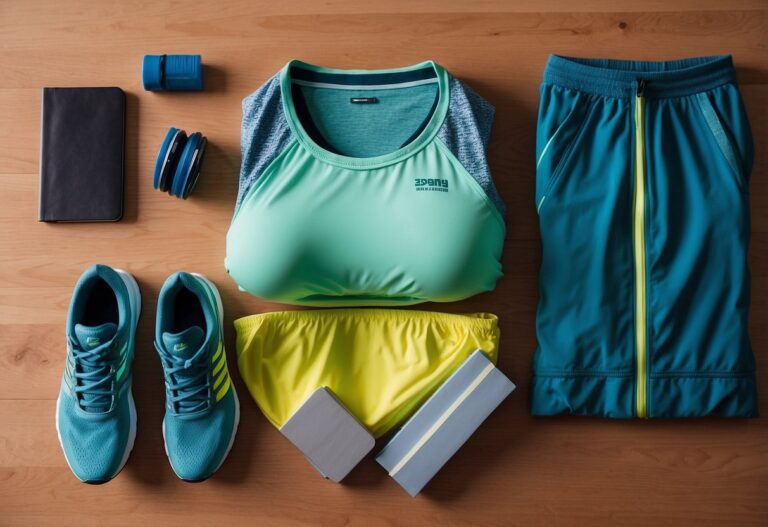Starting a workout routine can feel overwhelming, especially if you’re new to the gym or exercising in general. You might wonder, where do you begin, and how do you know you’re doing it right? Understanding some basic tips for beginners can make this journey much smoother, helping you stay motivated and achieve your fitness goals.

Being well-prepared is crucial for success in any new endeavour, including fitness. By learning some simple workout tips and strategies, you can build a solid foundation and enjoy a healthier lifestyle. Along the way, you may discover new interests and preferences that keep you excited about staying active.
Start with a Warm-Up
Warming up before a workout is key to getting your body ready. It helps increase your heart rate and blood flow to your muscles.
Begin with 5-10 minutes of low-intensity exercise. This could be walking or jogging lightly.
Include dynamic stretches like arm circles and leg swings. They help loosen up your muscles and joints.
Another great option is bodyweight exercises such as squats or lunges. These moves prepare your body for more intense activity.
Skipping this step can lead to injuries. So, always remember to warm up!
Focus on Form, Not Weight

When you start working out, it’s easy to get caught up in lifting heavier weights. Don’t fall into this trap.
Proper form is the key to effective and safe workouts. If your form is off, you risk injuries. You also miss out on the benefits of targeting the right muscles, explained well here.
Imagine you’re doing a squat. Focus on aligning your knees and hips correctly. This ensures your muscles work as they should and helps you avoid strain.
Try this: next time you workout, think about each movement. Are you staying controlled and steady? If not, lower the weight and master the movement first.
Hydrate Adequately
Staying hydrated is key when starting a new workout routine. You should drink water regularly throughout the day, not just during exercise.
Aim to drink half your body weight in ounces daily, even on rest days (more info here). For example, if you weigh 160 pounds, aim for 80 ounces of water.
Before a workout, drink an extra 16 to 24 ounces two hours before starting (helpful tips here). This helps ensure you’re well-hydrated before you begin.
During your workout, drink about 16 to 32 ounces every 30 to 60 minutes to replace lost fluids. Adjust depending on the workout’s intensity and duration.
Listen to your body. If you feel thirsty, take a sip of water. Always keep a bottle of water handy. Proper hydration can improve your performance and keep you safe.
Incorporate Compound Movements
Adding compound movements to your workout can make a huge difference. These exercises work multiple muscle groups at once, saving you time and boosting overall strength. Think about doing squats, deadlifts, or bench presses.
When you start with compound movements, focus on proper form. This helps prevent injuries and ensures you’re getting the most out of your workout. Begin with lighter weights to get the hang of the right technique.
Compound exercises are also great for burning more calories. Since they use more muscles, they require more energy. For example, a proper push-up targets your chest, triceps, and shoulders.
Feeling stronger? Try adding more weight slowly. This gradual progression is key to building strength without overdoing it. Remember, consistency is important. Stick with your routine and gradually increase the intensity.
Lastly, mix compound movements into your workouts for variety and balance. This keeps your routine interesting and challenges different muscle groups. Try a mix of exercises like squats, deadlifts, rows, and overhead presses to keep things fresh.
Allow Rest Days
Rest days are crucial for any fitness routine. Your muscles and joints need time to heal from the stress of exercise. Skipping rest days can lead to overtraining, which might cause injuries or burnout.
Using rest days for both recovery and productivity is a smart balance. Relax with a good book or catch up on a favourite show. You don’t always need to be active.
Doing something low-key, like a gentle walk or stretching, can also help you feel refreshed. Remember, giving your body time to recover will help you perform better when you get back to your workouts.
Gradually Increase Intensity

When starting out, it’s important to gradually increase the intensity of your workouts.
Begin with exercises at a level you’re comfortable with. As you get stronger, slowly ramp up the challenge. For instance, if you’re doing 10 repetitions, next week try 11.
Avoid making big jumps in weight or reps. Incremental changes help prevent injury and keep you motivated.
Remember, it’s not a race. Consistency is key. By steadily increasing your workout’s intensity, you’ll build strength and endurance over time.
Think about tracking your progress. Seeing improvements can be a great motivator!
Maintain a Balanced Diet

Eating right is just as important as your workouts. Start by focusing on a diet that includes a variety of lean proteins, fruits, vegetables, and whole grains.
When planning your meals, aim for a good balance of carbohydrates, proteins, and fats. For example, a 150-pound beginner bodybuilder might consume around 2,500 calories per day.
Eating before and after workouts is crucial. Consume a light meal or snack 1 to 3 hours before exercising to fuel your body and help maintain energy levels.
Track your progress
Keeping track of your workouts helps you see your improvement over time. Start by noting the date and exercises you do. Write down the number of sets, reps, and weights you use. This way, you can track your strength gains.
Photos can be a great way to see physical changes. Take one every month and compare them side by side.
Another way to measure progress is how your clothes fit. If your jeans start feeling looser, that’s a good sign you’re making progress.
For those who like apps, consider using one like Fitbod. It’s highly rated for customising your workout plans to fit your goals.
Use Proper Footwear
Wearing the right shoes can make a big difference in your workouts. The proper footwear helps you perform better and reduces the risk of injuries. For instance, running shoes offer excellent cushioning and support for high-impact activities.
Different exercises require different types of shoes. For weightlifting, you might need shoes with a flat sole for better stability. Meanwhile, cross-training shoes are great for a mix of activities like aerobic exercises and strength training.
Choosing the correct footwear means you can focus more on your workout and less on discomfort or pain. Ready to get started? Make sure your feet are too!
For more information, visit this guide on exercise footwear.
Prioritise Sleep
To get the most out of your workouts, it’s crucial to prioritise sleep. Good rest helps your body recover and grow stronger.
Athletes know the importance of sleep for peak performance. Getting enough rest keeps your hormones balanced and reduces recovery time. Aim for 7-9 hours of sleep each night.
Regular exercise can help improve your sleep quality. Activities like cycling or running release feel-good chemicals that make you feel better and help you sleep better.
Try to schedule your workouts earlier in the day. Too much exercise right before bed may keep you awake, making it harder to fall asleep.
Importance of Setting Realistic Goals

Setting realistic fitness goals is essential to avoid frustration and keep you motivated along your fitness journey. By understanding your fitness level and creating achievable milestones, you can steadily progress while minimising setbacks.
Understanding Your Fitness Level
Before setting any fitness goals, it’s crucial to assess where you currently stand. This means evaluating your current physical condition, diet, and daily activity routine. Start by asking yourself questions: Do you get out of breath easily? How often do you exercise?
For instance, if you haven’t exercised in years, jumping straight into running marathons isn’t advisable. Instead, consider starting with short, manageable activities. This way, you’re more likely to stick with it and gradually build up your stamina.
Consulting with a fitness expert can also provide a clearer picture of your fitness level. They might recommend a physical assessment, measuring aspects such as strength, flexibility, and endurance. Understanding these baseline metrics can help you identify realistic starting points and avoid injury.
Creating Achievable Milestones
Once you know your fitness level, the next step is to set small, realistic goals. These should be specific, measurable, and time-bound. For example, instead of saying “I want to get fit,” you might set a goal to jog for 10 minutes without stopping within a month.
Breaking down your fitness goal into smaller milestones makes the entire process less daunting. If your ultimate aim is to complete a 5K run, you could start with walking, then gradually incorporate jogging intervals.
It’s helpful to track your progress, whether in a journal or with a fitness app. Celebrate your achievements, no matter how small. This positive reinforcement can keep you motivated and committed to your fitness regime.
For more detailed examples and tips, you can refer to this beginner’s roadmap to success on setting realistic fitness goals.
Structuring Your Workout Routine
Creating a balanced workout routine involves mixing different types of exercises to cover all aspects of fitness: cardio, strength, and flexibility. Thoughtful planning ensures you get the best results without risking injury or burnout.
Balancing Cardio and Strength Training
To start, it’s essential to decide how often you’ll do cardio and strength training each week. Cardio exercises like running, biking, or rowing help improve heart health and endurance. Aim for at least 150 minutes of moderate cardio weekly, spread out over several days.
Strength training focuses on building muscle and should be done at least two days a week. You can split your workouts to target different muscle groups on different days. For instance, you might do upper body exercises on Mondays and Thursdays and lower body exercises on Tuesdays and Fridays. Combine both types of training for a well-rounded routine.
Incorporating Flexibility Exercises
Including flexibility exercises in your routine helps prevent injuries and improves your range of motion. Spend 10-15 minutes on flexibility exercises after your main workout. These could be static stretches, holding each stretch for about 30 seconds.
Another great option is incorporating yoga or Pilates a couple of times a week. These practices not only improve flexibility but also help with balance and mental relaxation. Consistent stretching will make your body feel better and help your muscles recover more quickly.
Scheduling Rest Days
Rest days are crucial for recovery and muscle growth. Plan at least one or two rest days each week where you avoid intense workouts. On rest days, engage in light activities like walking or stretching to keep your body moving without overloading it.
Your body needs time to repair itself from the stress of exercise, so make sure to listen to it. If you’re feeling overly tired or sore, it’s okay to take an extra rest day. Balancing activity with recovery will keep you on track and help you maintain long-term fitness success.







